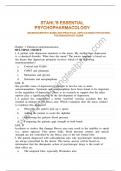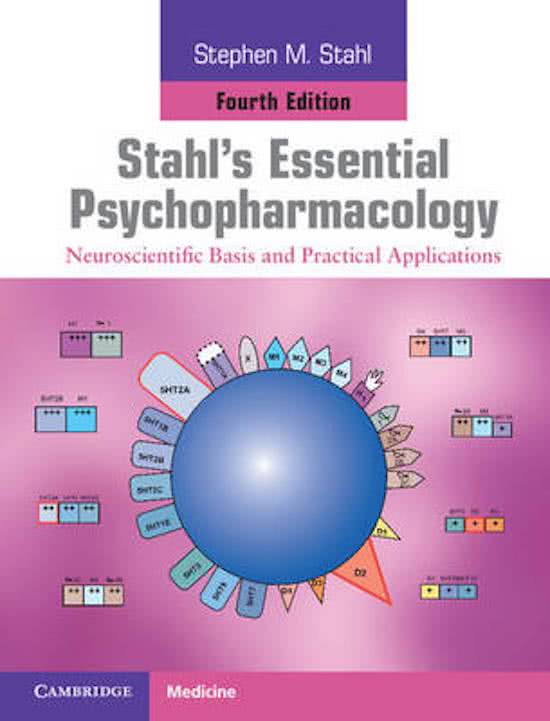Tentamen (uitwerkingen)
HSTAHL'S ESSENTIAL PSYCOPHARMACOLOGY NEUROSCIENTIFIC BASIS AND PRACTICAL APPLICATIONS 5TH EDITION TESTBANK/STUDY GUIDE
HSTAHL'S ESSENTIAL PSYCOPHARMACOLOGY
NEUROSCIENTIFIC BASIS AND PRACTICAL APPLICATIONS 5TH EDITION TESTBANK/STUDY GUIDE
[Meer zien]
Voorbeeld 4 van de 144 pagina's
Geupload op
10 september 2024
Aantal pagina's
144
Geschreven in
2024/2025
Type
Tentamen (uitwerkingen)
Bevat
Vragen en antwoorden
Titel boek: Stahl\'s Essential Psychopharmacology
Auteur(s): Stephen M. Stahl, S. M. Stahl
Uitgave: april 2013 ISBN: 9781107025981 Druk: 1
Samenvatting
Chapter 4 Stahls Psychopharmacology notes 5th ed
Tentamen (uitwerkingen)
FULL TEST BANK For Stahl's Essential Psychopharmacology: Neuroscientific Basis and Practical Applications 4th Edition by Stephen M. Stahl (Author) Graded A+
Tentamen (uitwerkingen)
TEST BANK STAHL-S ESSENTIALS PSYCHOPHARMACOLOGY 5TH EDITION
Alles voor dit studieboek (41)
Instelling
PSY 586
Vak
PSY 586
€14,87
100% tevredenheidsgarantie
Direct beschikbaar na betaling
Zowel online als in PDF
Je zit nergens aan vast
Chapter c1 cChemical cneurotransmission





